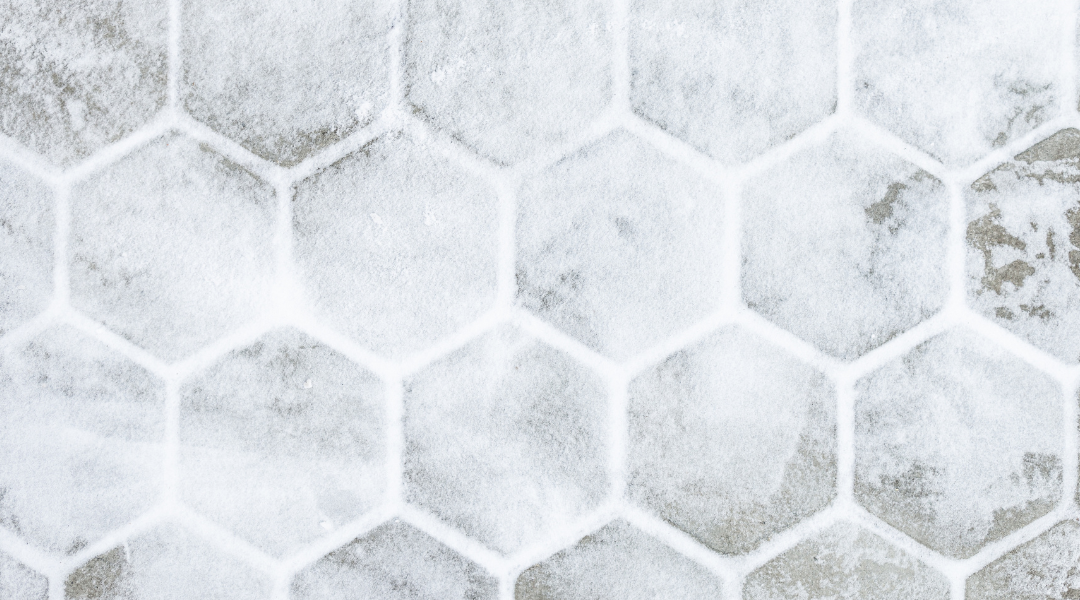Stone adds an element of beauty to any outdoor space. But when the freezing temperatures, ice, and snow begin to fall, how does it hold up? Natural stone surfaces can endure a lot, even the wear and tear that comes with the outdoor elements. But just like any material, a little love and care can go a long way in ensuring your outdoor space stays looking nice for years. If you want to keep your stone surfaces pristine, follow these three simple tips to winterize your exterior stone surfaces.
Learn to Care for Your Natural Stone – Watch Our Video!
1. Keep it Clear
Frost is the number one enemy of stone during winter. Why? When snow melts it can be absorbed or trickle into joints within the stone only to freeze once the temperature drops again. This freeze-thaw cycle is what causes stone to stain and even crack from within. To avoid this, clear snow from your stone surfaces before it has a chance to melt. However, make sure you avoid using a metal shovel while doing so as this can scratch and discolor the stone. Instead, try using a safer and just as effective plastic shovel. Another viable option is to cover your stone in a protective material such as canvas or vinyl tarps.
2. Sealant is Key
Stone sealants are designed to keep water, dirt, and other difficult weather conditions from affecting your stone’s quality. Be sure to apply a sealant that is designed specifically to handle the outdoor climate. To guarantee that your sealer protects against freeze-thaw cycle staining–or any staining–look for kinds that are impregnating. If you’ve applied a sealer in the past, it doesn’t hurt to check if a new coat needs to be applied. Pour a small amount of water on your stone’s surface. If you see the water is being absorbed, you’ll need to reapply.
3. Be Cautious with Your Chemicals
No one likes dealing with the dangers of winter ice. But be wary of which chemical you’re using to handle the problem. While a trusty bag of rock salt is great for dealing with roadways, it’s corrosive to natural stone and can cause staining that requires expensive restoration services to help rectify. To safely deice your stone, use calcium magnesium acetate (CMA). Not only is this product safe on your stone, but it’s environmentally friendly and pet friendly too. You can also help avoid winter slips and put your mind at ease by laying down stone-safe anti-slip products, keeping pathways well-lit, and using outdoor mats and carpets.
Other Winter Considerations
- Winterizing your exterior stone doesn’t have to translate to not using your space for the season. Enjoy your outdoor space year-round by basking in the warmth of a stone firepit or fireplace.
- Don’t forget that winter boots are great at tracking snow and deicing chemicals from everywhere outside into your home. Therefore, if you have stone floors inside your home and want to avoid staining or damaging them, keep a station in your entryway where family and guests can wipe off their feet and take off their shoes.
Winterize Your Stone to Keep it Stunning
Winter weather conditions aren’t a reason to sacrifice the style that comes with having stone surfaces adorn the exterior of your home. With these easy-to-follow tips, you can brave the winter storm and keep your outdoor stone looking gorgeous for years to come. Want to keep your indoor stone looking equally stunning? Read our answers to common stone cleaning FAQs.


